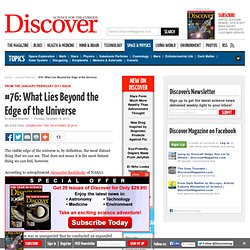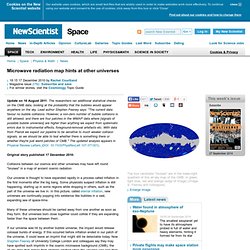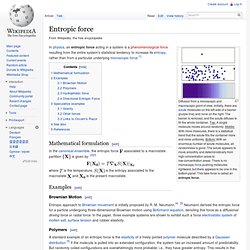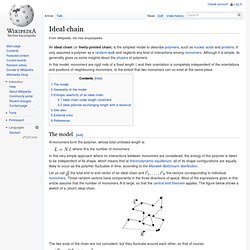

Fine-tuned Universe. Are We Living Inside a Black Hole? Scientists trying to explain the universe's accelerating expansion usually point to dark energy, which seems to be pushing everything apart.

But an Indiana University professor has a new theory, reports New Scientist: We're inside a black hole that exists in another universe. Specifically, a black hole that rebounded, somewhat like a spring. Some fairly mind-blowing physics is involved here, but the gist is that Nikodem Poplawski of IU-Bloomington used a modified version of Einstein's general relativity equation set that takes particle spin into account. #7: The Map of Everything. #46: Do Physical Laws Vary From Place to Place? Since the days of Isaac Newton, a bedrock principle of physics has been that the basic properties of the universe (the laws of gravity and the speed of light, for instance) are the same in all locations, at all times.

So scientists were intrigued by the announcement last August that one of the so-called constants of nature might not be so constant after all. John Webb, an astronomer at the University of New South Wales in Australia, was studying the fine-structure constant, which governs the strength of the force between charged particles, in a large number of distant galaxies. Using data from the Very Large Telescope in Chile, he and his colleagues found a slight but notable variation in the constant: It increased one part per million for every billion light-years farther they looked.
#76: What Lies Beyond the Edge of the Universe. The visible edge of the universe is, by definition, the most distant thing that we can see.

That does not mean it is the most distant thing we can feel, however. According to astrophysicist Alexander Kashlinsky of NASA’s Goddard Space Flight Center, something from way beyond the edge seems to be pulling powerfully on galaxies in our universe, yanking them along in a motion he calls “dark flow.” Kashlinsky and his team noticed this phenomenon while studying the cosmic microwave background, radiation left over from just after the Big Bang. Giant clusters of galaxies scatter the radiation in a way that makes it possible to determine how each cluster is moving. When Kashlinsky plotted those motions, he determined that the galaxies seem to be racing in a particular direction, roughly aligned with the constellation Centaurus. #83: Mammoth Star Is the Biggest One Ever Seen. Planck-CMB-05Jul10.jpg (JPEG-Grafik, 900x489 Pixel) - Skaliert (78%) Microwave radiation map hints at other universes - space - 17 December 2010.
Update on 16 August 2011: The researchers ran additional statistical checks on the CMB data, looking at the probability that the bubbles would appear anywhere on the sky.

Lead author Stephen Feeney says: "The current data favour no bubble collisions. However, a non-zero number of bubble collisions is still allowed, and there are four patches in the WMAP data where [signals of possible bubble universes] are higher than anything we expect from systematic errors due to instrumental effects, foreground-removal artefacts etc. With data from Planck we expect our pipeline to be sensitive to much weaker collision signals, so we should be able to test whether there is something there or whether they're just weird patches of CMB. " The updated analysis appears in Physical Review Letters (DOI: 10.1103/PhysRevLett.107.071301). Original story published 17 December 2010: Collisions between our cosmos and other universes may have left round "bruises" in a map of ancient cosmic radiation.
Hot and cold. Holographic principle. In a larger sense, the theory suggests that the entire universe can be seen as a two-dimensional information structure "painted" on the cosmological horizon[clarification needed], such that the three dimensions we observe are an effective description only at macroscopic scales and at low energies.

Cosmological holography has not been made mathematically precise, partly because the particle horizon has a finite area and grows with time.[4][5] Entropic force. Diffusion from a microscopic and macroscopic point of view.

Ideal chain. An ideal chain (or freely-jointed chain) is the simplest model to describe polymers, such as nucleic acids and proteins.

It only assumes a polymer as a random walk and neglects any kind of interactions among monomers. Although it is simple, its generality gives us some insights about the physics of polymers. Inflation (cosmology) Overview Around 1930, Edwin Hubble discovered that light from remote galaxies was redshifted; the more remote, the more shifted.

This was quickly interpreted as meaning galaxies were receding from Earth. If Earth is not in some special, privileged, central position in the universe, then it would mean all galaxies are moving apart, and the further away, the faster they are moving away. It is now understood that the universe is expanding, carrying the galaxies with it, and causing this observation. Many other observations agree, and also lead to the same conclusion.
Theory. Metric expansion of space. Dark energy. Adding the cosmological constant to cosmology's standard FLRW metric leads to the Lambda-CDM model, which has been referred to as the "standard model" of cosmology because of its precise agreement with observations.

Dark energy has been used as a crucial ingredient in a recent attempt to formulate a cyclic model for the universe.[8] Nature of dark energy[edit]